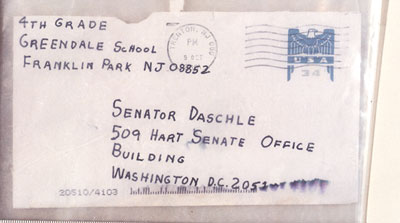Difference between revisions of "2001 Anthrax attacks"
(foreknowledge section) |
m (Text replace - "|ON_cause=" to "|ON_causes=") |
||
| Line 2: | Line 2: | ||
|ON_start=September 18, 2001 | |ON_start=September 18, 2001 | ||
|ON_end=October 9, 2001 | |ON_end=October 9, 2001 | ||
| − | | | + | |ON_causes=Bruce Ivins |
|effects=Mail Isolation Control and Tracking program | |effects=Mail Isolation Control and Tracking program | ||
|cause=Anthrax Attacks 2001/Perpertrators | |cause=Anthrax Attacks 2001/Perpertrators | ||
Revision as of 14:07, 9 January 2014
| Exposed by | Matt DeHart |
|---|---|
| Interest of | Emergent BioSolutions, Michael B. Green, Graeme MacQueen, Operation Dark Winter, Russell Welch |
| Subpage | •2001 Anthrax attacks/Timeline |
The 2001 anthrax attacks in the United States, also known as Amerithrax from its FBI case name, occurred over the course of several weeks beginning on September 18, 2001, one week after the September 11 attacks. Letters containing anthrax spores were mailed to several news media offices and two Democratic U.S. Senators, killing five people and infecting 17 others. The ensuing investigation is said by the FBI to have become "one of the largest and most complex in the history of law enforcement" [1], and cost around $100,000,000.[2]
Contents
Bruce Ivins
- Full article: Bruce Ivins
- Full article: Bruce Ivins
Bruce Ivins was a microbiologist, vaccinologist and biodefense researcher at the United States Army Medical Research Institute of Infectious Diseases (USAMRIID) in Fort Detrick, Maryland. He allegedly committed suicide by takeing a drug overdose on July 29, 2008. On August 6, 2008, he was officially declared the lone nut behind the Amerithrax Attacks, 8 days after his alleged suicide. On February 19, 2010, the FBI formally closed its investigation. No direct evidence implicating Ivins was presented and some documents relating to the investigation remain under seal. [3]
Foreknowledge
The White House staff started taking "CIPRO" - the anti-biotic effective against Anthrax - a week prior to the Anthrax mailings attack on the advice of Jerome Hauer. His reactions to the anthrax mailings were, at best, slow and he took every opportunity to invoke "Osama Bin Laden" in the rhetoric he employed in his public utterances about them. [4]
Mail Isolation Control and Tracking program
A secret program entitled The Mail Isolation Control and Tracking program was instituted after the 2001 Anthrax Attacks. This was hidden from the public for 12 years until cited by the FBI in its investigation of April 2013 ricin letters. Under the program, Postal Service computers photograph the exterior of every piece of paper mail that is processed in the United States — about 160 billion pieces in 2012. These images are kept so that the US Postal Service can retroactively track mail correspondence at the request of law enforcement.
Legal Action
In 2008, the Justice Department agreed to pay $4.6 million to settle a lawsuit by another former Fort Detrick scientist, Dr. Steven J. Hatfill, whom investigators pursued for years before they cleared him.[5]
On 2011-07-15, the Justice Department lawyers acknowledged in court papers that the sealed area in Ivins' lab — the so-called hot suite — did not contain the equipment needed to turn liquid anthrax into the refined powder that floated through congressional buildings and post offices in the fall of 2001. These statements were retracted 8 days later.[6]
On 2011-11-29, an 8 year legal battle was finished which exposed slack rules and sloppy recordkeeping at the Army’s biodefense laboratory at Fort Detrick, the federal government agreed to pay $2.5 million to the family of Robert Stevens, the first person killed in the anthrax letter attacks of 2001, settling a lawsuit claiming that the Army did not adequately secure its supply of the deadly pathogen. As part of the agreement, Justice Department lawyers are seeking to have many documents that were uncovered in the litigation kept under court seal or destroyed.[5]
External Sites
- Dr Meryl Nass web site
- Deep Politics Forum Thread
- Wikipedia main Anthrax attacks page
- Timeline of the 2001 anthrax attacks
References
- ↑ FBI web site Anthrax case links
- ↑ UG#561 - $100,000,000 to Crack A Lone Nut? (Amerithrax, Gladio, 7/7 and The Conspiracy against Conspiracies), radio show including 1 hour about the Amerithrax case
- ↑ F.B.I., Laying Out Evidence, Closes Anthrax Letters Case New York Times 19 February 2010
- ↑ Jerome Hauer Cipro advice to White House
- ↑ a b Anthrax Families To Recieve $2.5 million settlement New York Times, 30th Nov 2011.
- ↑ Justice Dept Filing Casts Doubt On Guilt of Bruce Irvins. ProPublica.com. 15th July 2011.
